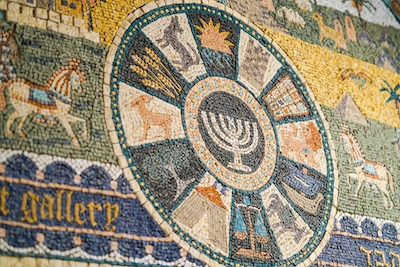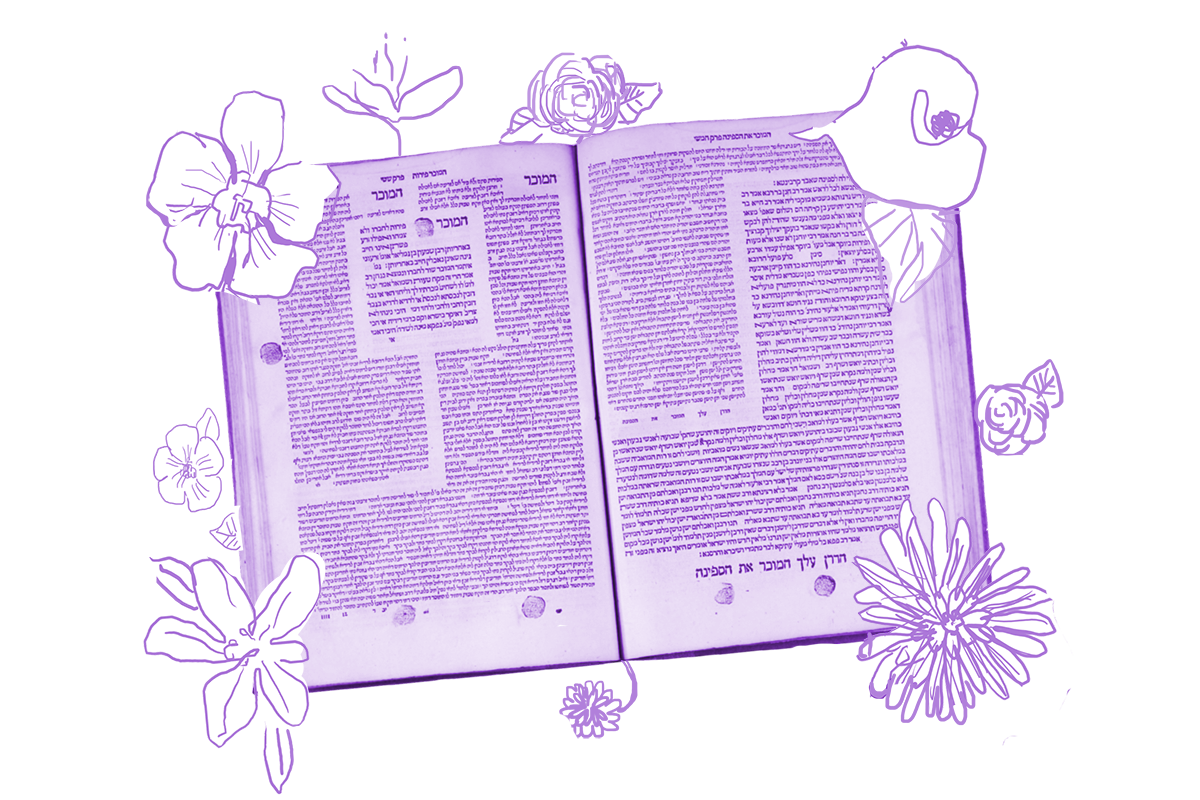I don’t know about you, but I love the serial comma, also called the Oxford comma. You know, the comma that is placed immediately after the penultimate item and before the “and” in a series of three or more items, as in: when you go to the market, please pick up some milk, eggs, and bread. It avoids ambiguity and, as a recent court case involving overtime pay for truck drivers demonstrated, it can have real legal consequences. (And yes, My Jewish Learning style is to leave out this comma, but we’re all good friends here.)
The Gemara has been discussing the sacrifices that one brings to the Temple during the pilgrimage festivals, and the conversation has shifted to an inquiry as to whether or not these sacrifices were offered by the Israelites at Mount Sinai. On today’s daf, a tangential talmudic debate rests on how a particular biblical verse, Exodus 24:5, which describes the offerings made by the Israelites at Sinai, is punctuated. Here’s the verse, presented without punctuation:
And he sent the young menof the children of Israel and they offered burnt offerings and sacrificed peace offerings of bulls to the Lord.
Here is the punctuation question raised in the Gemara:

Help us keep Jewish knowledge accessible to millions of people around the world.
Your donation to My Jewish Learning fuels endless journeys of Jewish discovery. With your help, My Jewish Learning can continue to provide nonstop opportunities for learning, connection and growth.
Rav Hisda raises a dilemma: How should this verse be understood? Should it be read as two separate halves, with the first part consisting of: “And he sent the young men of the children of Israel and they sacrificed burnt offerings,” which were sheep; and the second part consisting of the rest of the verse: “And they sacrificed peace offerings of bulls to the Lord,” i.e., these peace-offerings alone were bulls? Or perhaps both of these (the burnt offerings and the peace offerings) were bulls?
Are those burnt offerings mentioned in the first half of the verse sheep? Or are they bulls? And, given that this verse describes something that happened only once in the biblical narrative, why does it really matter?
Rav Aha, son of Rava, explains why it matters. Suppose a person makes a vow, pledging to bring the same burnt offering sacrifice that the Israelites made in the desert at Mount Sinai if they fail to uphold the vow. If this person then indeed fails to meet the terms of their vow and becomes obligated to make that sacrifice, the former reading would require them to bring a sheep; the latter, a bull. They wouldn’t know what to bring.
While this might seem a highly unlikely scenario, put yourself in the shoes of the vow maker (or the dairy drivers whose overtime pay was dependent on the inclusion or absence of a serial comma). And in any case, the rabbis are curious to know exactly what sacrifices were made at that particular moment.
Mar Zutra now explains the underlying issue that determines the punctuation, and therefore the correct reading, is the placement of the cantillation notes, extra marks on the text that indicate how it is chanted.
Our contemporary cantillation system was implemented in the tenth century by the Masoretes, Jewish scribes who standardized the vowels, verse divisions and cantillation marks of the Hebrew Bible. The cantillation system they implemented does indeed serve to punctuate the biblical text in addition to providing the musical score to which it is sung during public recitations. This cantillation system places an etnachta cantillation mark, which acts like a comma and marks off the first segment of the verse, under the initial olot (burnt offerings) of the verse, rendering the following punctuation: And he sent the young menof the children of Israel and they offered burnt offerings, and sacrificed peace offerings of bulls to the Lord. This suggests the burnt offerings were not necessarily bulls.
In the days of the Gemara, however, which pre-date the Masoretes by a few hundred years, this system was not yet fully developed. The Gemara is probably talking about a more basic notation system that indicates how to parse a verse into phrases and, perhaps more significantly, was not yet standardized — hence the uncertainty about this verse.
So did the Israelites offer up sheep or bulls for the burnt offering at Sinai? The Gemara does not answer Rav Hisda’s question, but proclaims teiku, “let this matter stand unresolved,” leaving the vow-breaking, sacrifice-owing individual without clear direction about what animal to bring. That is, until the biblical grammarians would resolve the debate about whether to include a comma in the verse or not.
Read all of Chagigah 6 on Sefaria.
This piece originally appeared in a My Jewish Learning Daf Yomi email newsletter sent on February 15th, 2022. If you are interested in receiving the newsletter, sign up here.



